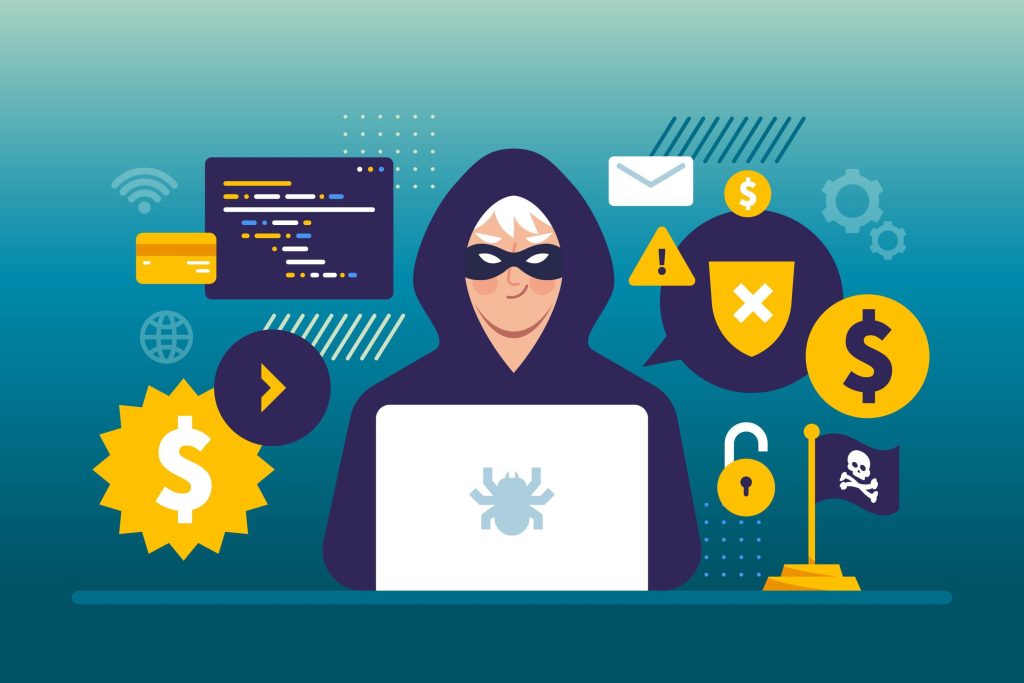“Ransomware attacks have risen by 13 percent in the last five years, with an average cost of $1.85 million per incident.”
Ransomware is a constant threat to businesses. If you don’t want to fall prey to these attacks then know all the details about how a ransomware attack may happen, how to detect it, how to prevent it, and how to respond to a ransomware attack.
What is a Ransomware Attack??
Ransomware is malware in which malicious software is designed to block access to a computer system. The decryption key isn’t given until a huge ransom is paid.
Recently various types of ransomware attacks have been a threat to businesses no matter the size of business. A small business or a huge organization has equal threats. In the event of a ransomware attack, attackers gain unauthorized access to a company’s data and restrict its availability, often encrypting critical information. The attackers then demand a ransom to restore access to the data. If the company can afford to pay, it might recover its data. But there is no guarantee that you can get your data back even if you pay ransom. If the ransom is unaffordable, the businesses may face severe disruptions.
How does Ransomware Attack work?
Ransomware can be infiltrated in the systems through various methods. A Ransomware attack blocks the access of computer systems through various methods, like phishing attacks. In a phishing attack, malicious emails have attachments with ransomware. The ransomware is activated once the attachment is opened or the link is clicked, affecting the system.
A more aggressive type of ransomware is NotPetya. It exploits vulnerabilities in security protocols to infect systems without user interaction.
A ransomware attack encrypts files and locks users out of their data. Afterward, attackers demand a ransom in exchange for restoring access. If the amount isn’t paid, the attackers blackmail that they’ll leak the data.
Recently many types of ransomware attacks are most common and have disrupted various companies. You must know them so you can protect your data effectively.
Types of ransomware attack.
The following are the types of ransomware attacks:
- Double extortion:
It was designed to collect the ransom if someone refused to pay it. In this, the attacker not only encrypts the data but also steals the data and blackmails the organization to pay a ransom or manipulate them to leak the data.
2. Crypto Ransomware or encryptors:
The attackers encrypt the file and data content, making the data inaccessible without a decryption key.
3. Locker ransomware:
This is one of the types of ransomware attacks. Lockers completely lock the system so the organization doesn’t get any access to the system. The locked screen displays the demand for ransom with a clock to increase urgency. This drives fear in the victim’s mind due to which they pay the ransom amount.
How to detect a ransomware attack?
Current ransomware attacks can be detected with a combination of education and technology.
- Educate your employees:
Arrange some sessions for the organization’s employees to inform them about types of ransomware attacks, how to detect a ransomware attack, and if the systems get attacked by the ransomware, they can do so.
- Keep a check on your network and endpoints:
With proper monitoring, you can log incoming and outgoing traffic, scan files for evidence of attack, and investigate anything that you feel isn’t ordinary.
- Must have a honeypot :
It is a good way to detect a ransomware attack. A honeypot is a strategic cybersecurity tool designed as a decoy to trap attackers. It consists of fake repositories and files that mimic original data. When the ransomware attacker engages with the honeypot, the attack is detected early, enabling security teams to respond swiftly and neutralize the threat before any real harm is done.
Here’s how to respond to a ransomware attack.
- Isolate the system that was impacted.
Disconnect affected devices from the network to prevent the further spread of ransomware.
- Power down the device if you’re unable to disconnect it.
If you are unable to disconnect the affected devices, power off them so that ransomware will not spread further.
- Use backups.
If your organization has reliable data backups, the first step in recovering from a ransomware attack is to restore affected systems using these backups. Make sure that the backup is clean. The backup should not be affected by a ransomware attack.
- Consult with experts.
If a ransomware attack happens in your organization, it’s necessary to recognize that your internal resources might not be sufficient. In such cases, consulting with cybersecurity experts can provide you with advanced solutions to your specific needs. Guidance from experts can help in an effective response to the threat.
- Don’t pay the ransom.
Authorities strongly advise against paying the ransom under any circumstances. Paying only encourages the attackers, potentially funding future criminal activities and putting your organization at further risk. Instead, focus on recovery strategies and report the incident to the appropriate law enforcement agencies.
How to prevent a ransomware attack?
- Backup your data
Backup cannot help in protecting the data but it’ll help in restoring the data. The company’s work won’t stop after the attack.
- Update frequently
Regularly update your software to prevent these current ransomware attacks. Many software updates include security measures that close vulnerabilities. Keeping your systems updated reduces the risk of a ransomware attack.
- Ensure data protection
To effectively prevent the current ransomware attack, invest in comprehensive data protection strategies. This includes using backup, data protection services, and detection systems to safeguard your organization’s information. By securing your data, you significantly lower the chances of these current ransomware attacks.
If you are the next one on the list of attackers don’t worry. DataGalaxy’s, data security and protection services will help you face the threat and protect your data if any ransomware attack happens on your organization. Connect with us and face the current ransomware attack with planning.

